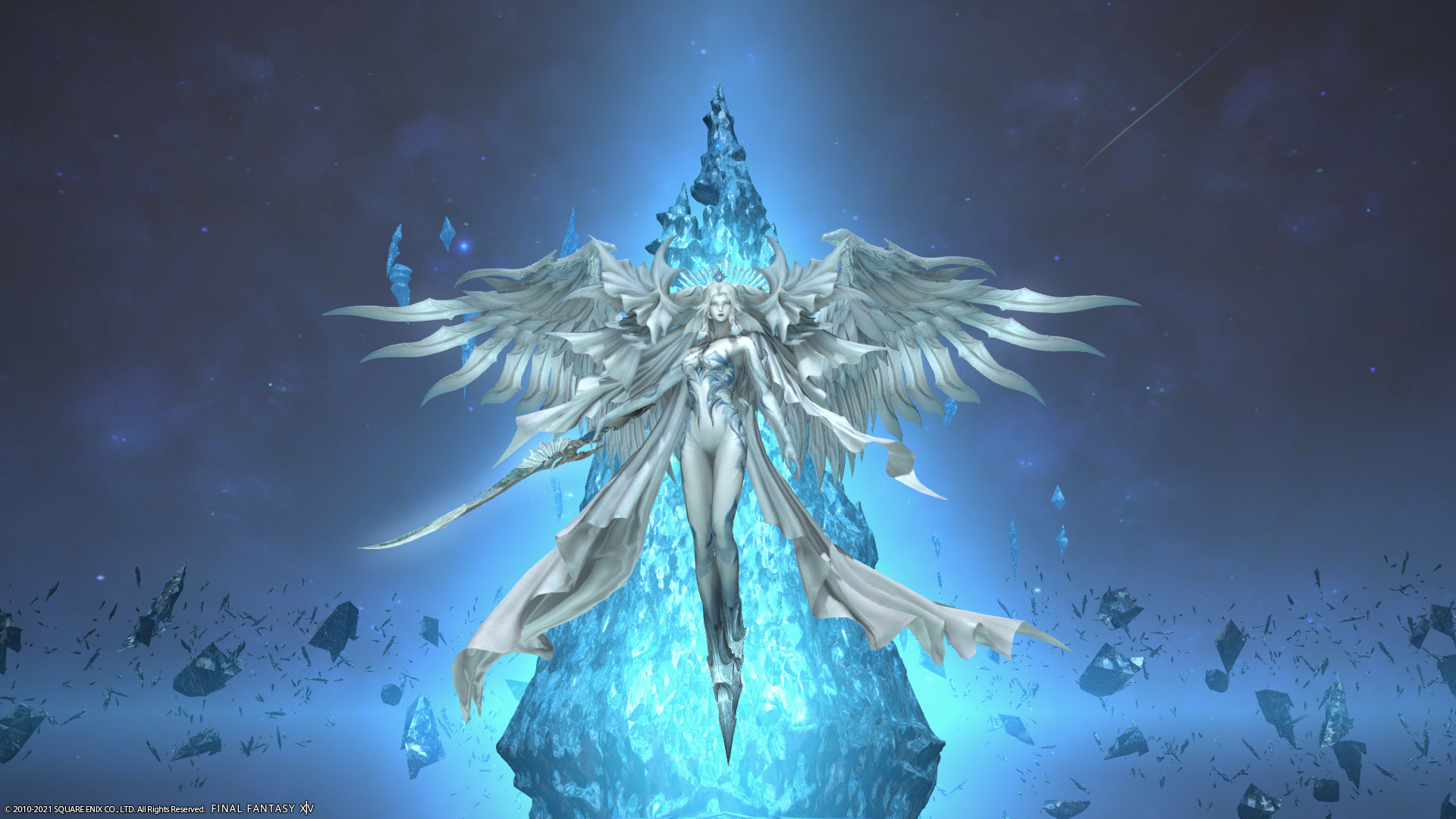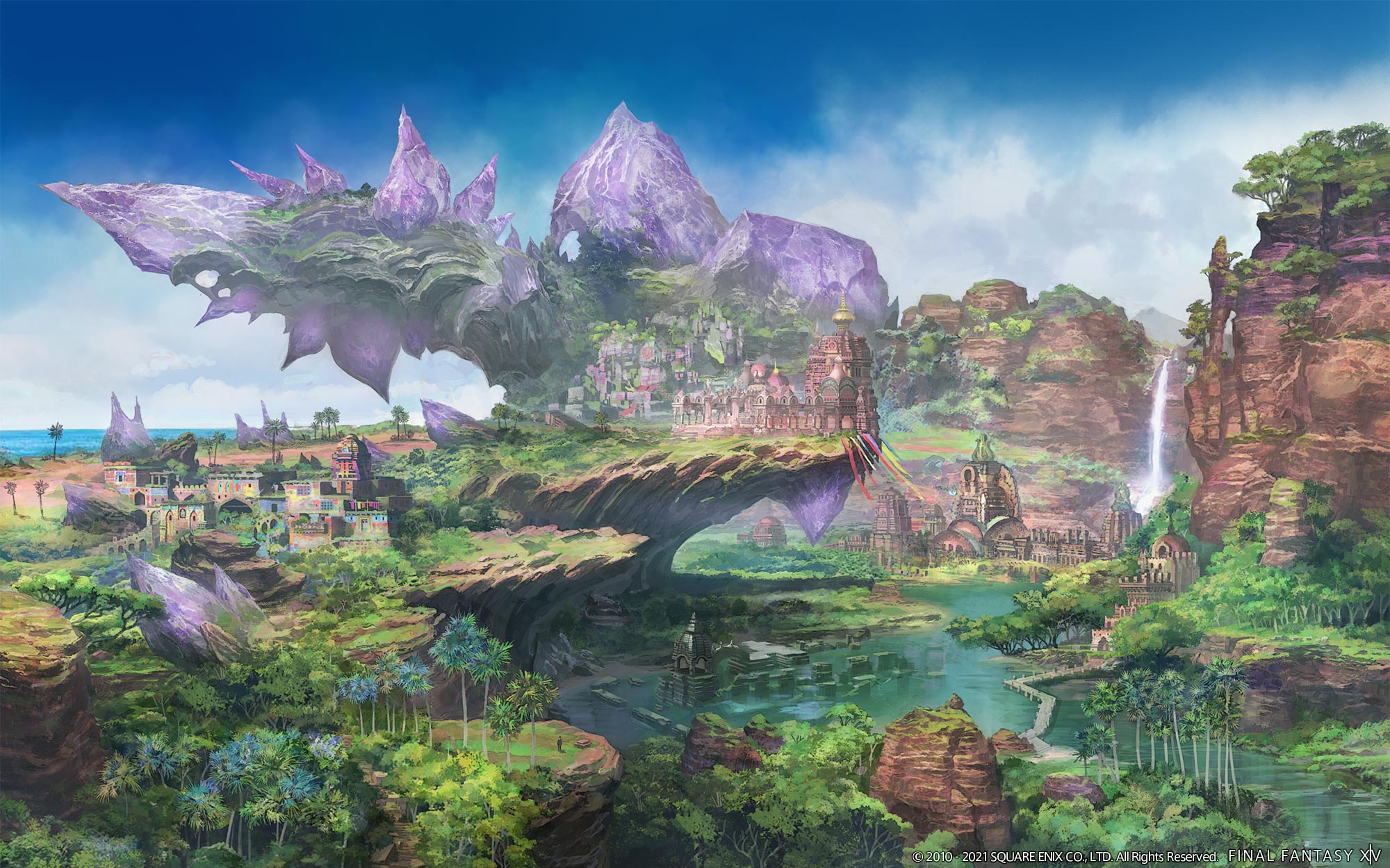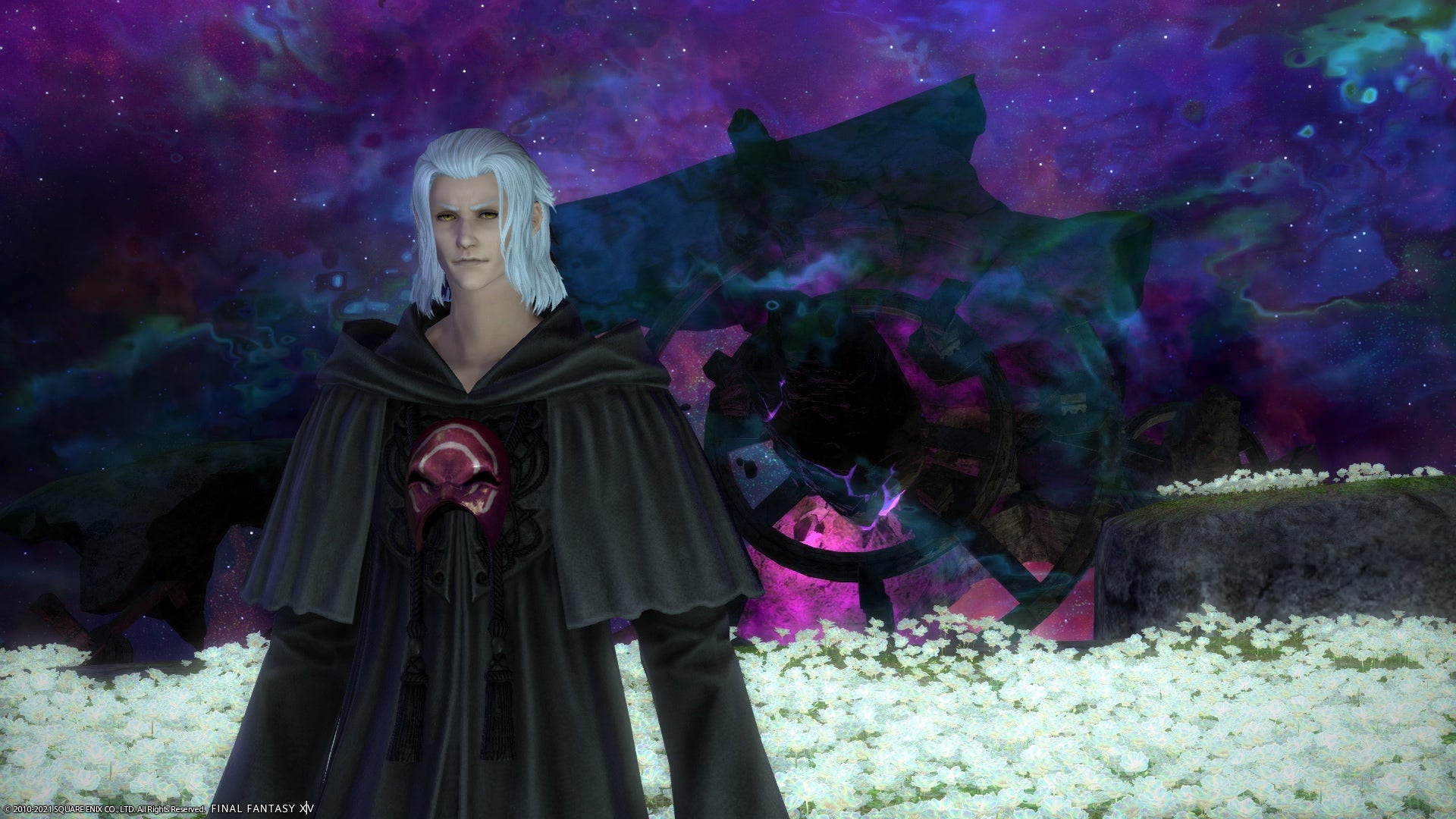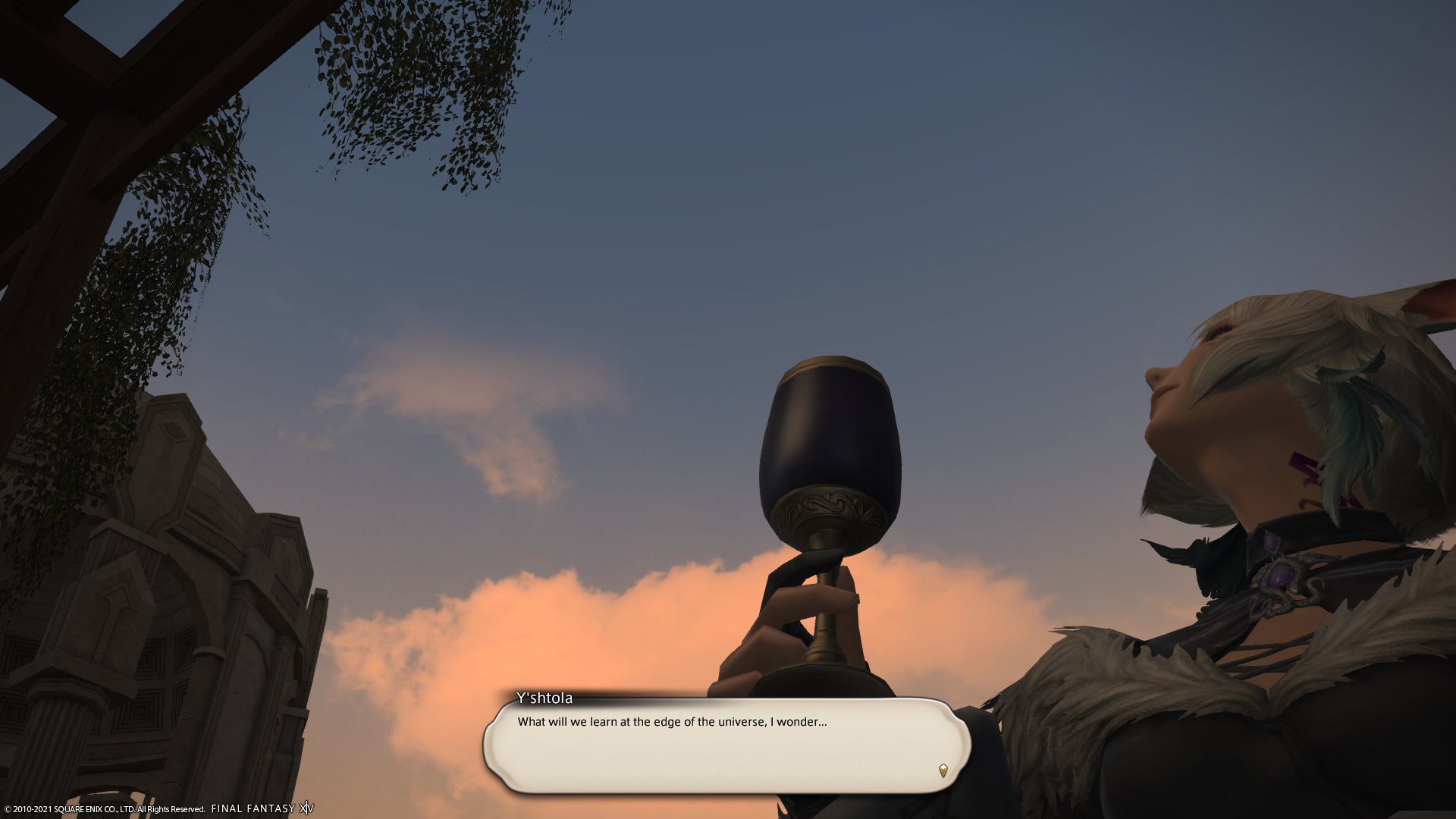We spoke with producer and director Naoki Yoshida – aka Yoshi-P – and lead story designer Natsuko Ishikawa, about some of our favourite moments and what makes them so impactful, as well as the trials of developing during lockdown, and the strain of such a huge launch. Be warned as there are some major spoilers ahead. Naoki Yoshida: It’s quite difficult to pick a certain scene in particular, but if I had to, I would say the one where the Warrior of Light parts ways with Venat, now as Hydaelyn. Even more so than the theatrical performance of the characters, I was very particular about the modeling of Hydaelyn and environment settings. I took great pains to ensure Mr. Amano’s artwork was perfectly recreated, while at the same time attempting to make it so that the player identifies themselves with the life that Venat led. I hope we were able to convey her thoughts to the players. Natsuko Ishikawa: It’s very difficult to choose, but the first scene that came to mind was when we bring forth the flowers in front of Meteion in Ultima Thule. And then, the scene where we talk with her in the end. I think it’s precisely because we went through a process of building on what we established in FFXIV that the things that happen and the words exchanged in these scenes are so valuable. At the very edge of the universe, Meteion says to the adventurer: “Thank you for guiding me here. To find these words at journey’s end fills me with joy.” I share her sentiment. There were quite a few very intimate, personal moments throughout Endwalker such as speaking with Hermes and showing him he’s not alone in his despair, and Urianger finally facing Moenbryda’s parents – what went into writing those moments and why is it important to have these smaller moments within a story of such epic scale? Yoshida: The scene where Urianger meets Moenbryda’s parents once more was one that I asked Ishikawa to address when we were working on the plot. With the group heading to Old Sharlayan, I asked her to somehow complete the only loose thread that was left hanging in Urianger’s story so far. FFXIV’s story is not only the story of the players, the Warriors of Light, but also that of the Scions of the Seventh Dawn, who support them on their journey. When I took over the reins of the original FFXIV, Urianger was close to the first new character we created, so I guess you could say I also have a strong emotional attachment to him (laughs). The main character of FFXIV is you as the player, so basically the player’s character doesn’t talk in the game. Instead, the Scions speak their thoughts and that in turn creates a position for the Warrior of Light at the centre of it all. That’s why it’s so important to portray their stories carefully, in order to portray the Warriors of Light. Ishikawa: At the end of the day, no matter how grand a certain history might be, it is the individual lives of the people that form those threads of history. Those who live in the same era should be able to see parts of a story that may be watered down or cut altogether when the history of that place or time is compiled in later generations. Take Hermes for example. He would probably be recorded in history as “the one who made a big mistake,” but there was a moment where he struggled about what he should do, and smiled as he shared his pain with you. Another example would be when Urianger from the Scions of the Seventh Dawn cries when receiving a hug from the mother of his close friend. I believe that encountering such events and coming into contact with each of the lives that make up that history is what it means to “live in that world”. There was one moment in Thavnair that almost broke me – the one with Matsya and the baby that almost goes horribly wrong and lasts just long enough to doubt yourself. What went into balancing that moment and making it so agonising? Ishikawa: I often have nightmares when I sleep. They can be surprisingly thought-provoking and inspirational. For example… let’s see… yes, there was an evil spirit in a building and it’s hunting down people. I’m hiding in a windowless room. I’m desperately hoping “Don’t find me!” but the thought that “sooner or later I’ll be found in this spot” keeps nagging at me. Being in a dream is essentially delving into your mind, so once you realise that possibility (of something bad happening), you’re done for. No matter how much I might scream “Don’t come!”, the evil spirit will find me and I’ll get a bad ending. …So it was these experiences from my daily nightmares that I attempted to use in the dialogue and direction of that scene. Although my endings are usually bad, I always thought about having Matsya get rescued by Vritra and Estinien! Emet-selch was such a standout character and tragic villain during Shadowbringers – how did it feel to be able to touch on his more formative years and character in Elpis? What do you think it is about him that resonates so well with players? Ishikawa: It was not only when writing the story but also when giving directions for the voice acting and theatrical performance, I paid particular attention toward making sure that the Emet-Selch we meet in Elpis is the man he was originally before living a long life in the sundered world. He’s still very hard-headed and driven to fulfil his role. But, his perseverance is sincere and you get a glimpse of his kindness; something that eventually leads to his own downfall. I think it’s that multifaceted aspect of his personality which makes him feel truly human and is one reason why he is loved by the fans. The moment where you make the final climb up in Ultima Thule and the lyrics kick in is such a poignant moment filled with sorrow and hope – how did that all come together? Was the scene written with the lyrics in mind? Ishikawa: First and foremost, I thought about delivering the same experience as when we first reached Amaurot in Shadowbringers using another method. Having considered how the story would unfold and including the aforementioned aim, I decided to use a structure like the one that was implemented in the end; the song starts to take clearer form as the player’s path is built, and eventually the song takes off (with the lyrics). However, what I had in mind at the time was a chorus, something which would be sung by a choir. In response, our composer Soken suggested that we incorporate vocals by Jason Charles Miller as the main part of the song. I instantly thought “what an amazing idea!” and with that I set about writing a draft of the lyrics. In short, we produced the music and story with an aim to generate synergy between those two mediums! How did you feel about having to make the decision to pause sales of the Starter Edition so soon after release? Will you potentially pause them again if congestion soars again? Yoshida: The huge levels of congestion was what prompted the decision, so more than anything I felt incredibly sorry toward our current FFXIV players. The honest truth is that it was tough for us because we never thought that our 11 years of hard work to expand our user base would cause us to suffer in this way. However, since FFXIV is there for all the players who have supported and played the game up until now, I would probably make that call again to suspend the sales if we see signs of heavy congestion once more. After all, my priorities remain the same: all of our players come first! Endwalker is huge and covers so much story, not to mention it was made through a challenging pandemic – did anything have to be cut out? And if so what sort of things were cut? Yoshida: Indeed, there was a big impact from the pandemic and, compared to previous expansions, the work to round off development and improve the quality was more difficult this time around. However, there was nothing in particular that we needed to cut from our original plans, with the Data Center Travel System being the only thing we had to postpone due to the server congestion. In fact, the whole team worked so hard to surpass the volume we had originally intended to implement, and Endwalker turned out to be a bigger expansion than initially planned. Having said that, this time we took special measures to conclude the first major saga. I don’t think we’d be able to pull it off if the players expect this for every expansion! (smiles bitterly) Unlike in previous expansions where the story has continued with patches, Endwalker has a conclusion - will future patch releases continue to follow a similar pattern to previous expansions or will the content type and amount etc (and pandemic!) change to reflect this? Yoshida: The pace and progress of the story will remain basically the same, so players need not worry about this. However, the content of the major patch updates has been scaling up with each successive expansion, and as such, I intend to include some workflow changes in relation to their content and cycles. We are also working on new systems and unannounced new content, which we intend to reveal to players in the near future as part of our mid to long-term plans. Your patience would be appreciated!



